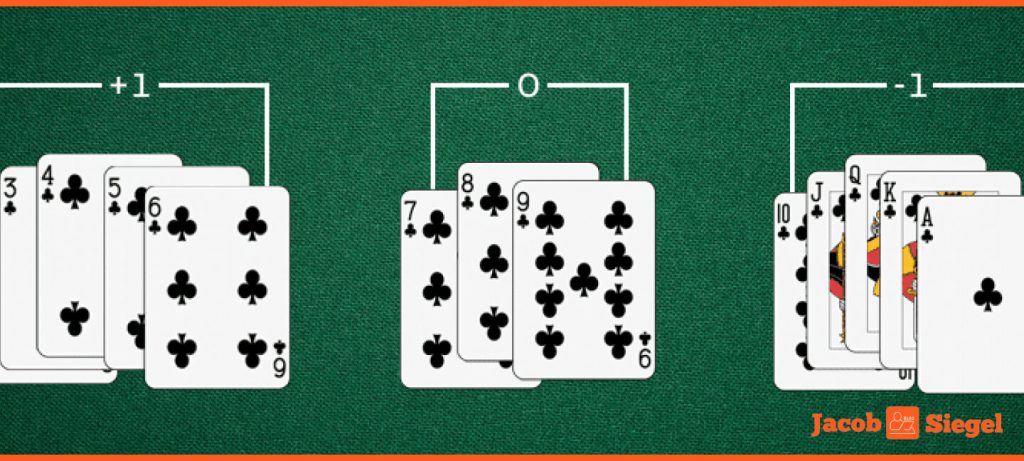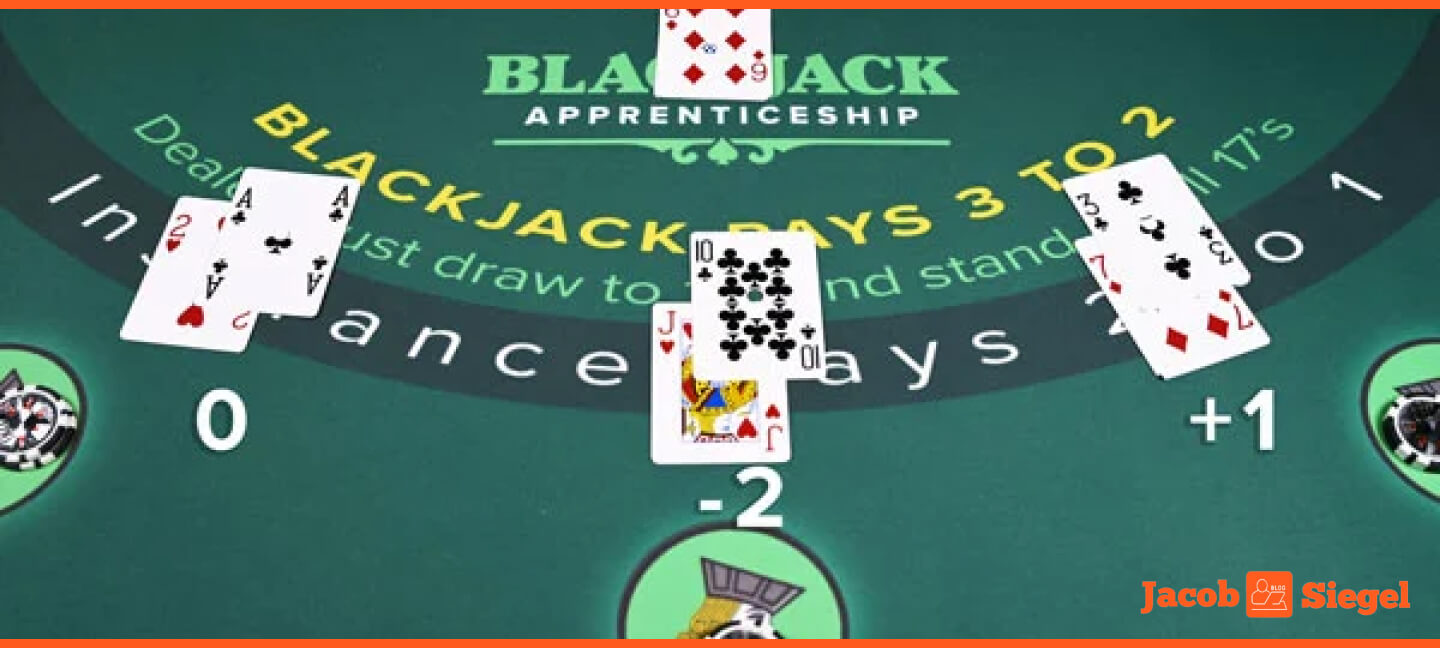Card counting in blackjack is a technique often talked about, but rarely completely understood. It’s an approach that can tip the scales in favor of the player over the casino. In this article, we’ll examine the concept, how players use it, and its legal position in various areas.
The Basics of Card Counting
Card counting in blackjack involves monitoring the ratio of high to low-value cards in the pack. The concept is simple, by determining which cards have run out, players can predict what will happen next.
- High-value cards generally encompass tens and face cards. Players may profit from having more of these in the pack;
- Low-value cards range from 2 to 6. The more of them in the pack, the better for the dealer;
- Players mentally calculate points, increasing or decreasing them depending on the cards dealt. Several scoring systems assign different point values to them.
- Typically, if the pack has more high-value cards, it’s wise to up your bets. On the other hand, if the tally is under zero, a player might decide to wager less.
- Counting is legal in most nations, but casinos often frown upon it. They might ask such players to exit or prevent them from playing blackjack;
- It takes practice. While it doesn’t guarantee victory, it can give you an edge over time;
- Some believe it’s about recalling every card that’s been dealt, but it’s mostly about recognizing the composition of the remaining pack and adjusting wagers as needed.
Card Counting Strategies

Different card-counting strategies exist in blackjack, each having its approach. This section will delve into five main strategies, examining their fundamental principles, effectiveness, and suitability for varied players.
Hi-Lo
The Hi-Lo strategy is among the most common and widely employed card counting methods. Its simplicity allows accessibility for players, but it also possesses complexities that bring benefits for more profound comprehension.
- In the Hi-Lo system, cards are given a value of +1, 0, or -1. Cards 2-6 are valued at +1, 7-9 are marked as 0, and 10 to Ace have a -1 value;
- With these values, players maintain an ongoing tally, modifying it as each card is dealt;
- The existing tally is divided by the number of packs left to obtain the true tally, giving an exact picture of the pack’s makeup;
- The true tally guides the player’s wagers and choices, with greater wagers made when the tally is positive;
- The Hi-Lo strategy can work, but it requires practice. It’s not as refined as more intricate methods but is more cost-effective;
- Holding precise tallies in a casino setting can be challenging. Hurdles such as disturbances, rapid dealers, and multi-pack games can muddle the procedure;
- The Hi-Lo strategy frequently fits newcomers to the game, balancing simplicity with effectiveness.
Zen
The Zen method is a more subtle strategy that requires deep reflection. Here is a detailed look at this strategy:
- Unlike simpler methods, the Zen approach uses a tiered counting approach. Cards 2, 3, and 7 – +1; 4, 5, and 6 – +2; 8 and 9 – 0; aces – -1; 10, including face cards – -2;
- Players maintain the current total in their minds, changing it as cards are drawn;
- The true tally is figured by dividing the present tally by the number of packs left;
- Players rely on the true bottom line in their betting and gameplay, betting higher when the bottom line is positive;
- This method is more powerful than simpler techniques such as Hi-Lo, but requires more training;
- The method can be adapted to different blackjack games and conditions, allowing experienced players to build up their advantage.
Omega II
The Omega II method is an even more advanced card-counting method. It unveils an even more refined strategy, with complex nuances that equip capable players with a strong tool.
- The system uses tiered scoring. Cards 2, 3, and 7 are valued at +1; 4, 5, and 6 are valued at +2; 8 is valued at 0; 9 is valued at -1; aces are valued at 0; 10 and face cards are valued at -2;
- Players keep a running score, adjusting its value as each card is dealt;
- As in the other methods, the running total is divided by the number of remaining packs to obtain the true total;
- The true total is used by the players to make decisions; if the outcome is favorable, they raise the bets;
- The system is among the most potent card-counting methods but requires extensive expertise to use;
- The complexity of Omega II demands sharp training. Mistakes can quickly transform a winning situation into a losing one;
- Omega II is most appropriate for highly skilled players seeking a rigorous and strong card-counting tool;
- The method gives one of the most exhaustive assessments of the pack but is also one of the toughest systems to master and apply.
Uston SS
The Uston SS system, designed by proficient blackjack player Ken Uston, is seen as potent in performance but still maintains some simplicity. Here’s an all-inclusive review of this method:
- Cards 3, 4, 5, and 6 are valued at +2; 2 and 7 are +1; 8 and Aces are 0; 9 is -1; and 10 and face cards are -2;
- The method strikes a fitting balance between performance and simplicity, making it a preferred choice for many participants;
- While less complicated than several multi-level systems, the Uston SS still requires training;
- Uston is suitable for players at middle to high levels seeking a potent yet controllable method;
- The Uston SS functions as a robust alternative to both simpler and more complex methods, offering steadiness.
Wong Halves
The Wong Halves technique, created by Stanford Wong, is considered one of the most accurate methods. It’s named this due to using fractional values during the tally. Here’s a detailed investigation:
- The Wong Halves technique assigns values of +1.5 to 3s and 4s; +1 to 2s and 7s; +0.5 to 6s; 0 to 8s and Aces; -0.5 to 9s; and -1 to 10s and face cards;
- The true total is used by players to adjust their bets and gameplay, with the stake increasing if the total is positive;
- This strategy is highly effective, offering one of the most accurate assessments of the pack’s composition;
- The use of fractional values makes this method one of the most challenging to grasp.
- Players with skills can tailor the method to various games and environments, but this requires deep knowledge;
- Wong Halves ideally suits those who are highly proficient, pursuing the most sophisticated system;
- The Wong Halves is among the most challenging yet forceful card-counting methods. It’s not apt for newcomers but will be a top choice for experienced players.
Read about Best Roulette Systems
Conclusion
Card counting in blackjack is a multifaceted skill with various methods to suit diverse player levels. From the elementary Hi-Lo method to the highly complex Wong Halves, each strategy offers distinct advantages and challenges. Understanding these methods and finding the one that fits your skill level can significantly boost your success at the blackjack table. With the right approach, card counting can become a valuable tool for anyone hoping to gain an upper hand in this classic casino game.

